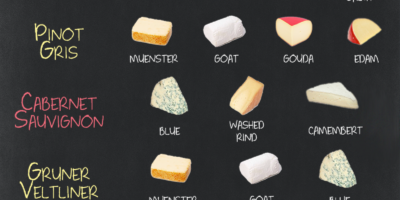Understanding Muscat: More Than Just a Grape
Muscat is a name associated with a wide range of grape varieties. It covers several species of Vitis Vinifera grapes, known primarily for their aromatic qualities. The origins of Muscat are traced back to ancient times. They are among the earliest grape varieties cultivated by humans. You find them worldwide, thriving in numerous wine-producing regions.
The Many Faces of Muscat
Muscat grapes come in multiple color variations. These include white (blanc), pink (rose), and even red or black (noir). Despite these differences, all Muscat grapes share a distinctively sweet floral aroma. This aroma is reminiscent of roses, ripe peaches, and sometimes a hint of spiciness or musk.
Several different grapes fall under the Muscat umbrella. Key varieties include Muscat Blanc à Petits Grains, Muscat of Alexandria, and Muscat Ottonel. While they share a common lineage, these types are cultivated differently depending on the winemaker’s aims and the regional conditions.
Historical Significance of Muscat
Muscat is one of the world’s oldest known grape varieties. Historical findings suggest it was favored in ancient Egypt and Rome. Its appealing sweetness and intense fragrance made it a prized choice among ancient vintners.
Documents from the medieval period highlight the trade of Muscat. Its journey spread through Greece and Italy, reaching as far as Spain and France. It was a part of the cultural exchange during the traverses of the Silk Road. Muscat’s spread was facilitated by its adaptability to varying climates.
Muscat in the Modern Wine Industry
Today, Muscat remains a vital player in the wine industry. It prevails in different forms—from dry to sweet wines. These grapes are known for producing diverse wine styles. In some regions, it is also used to create fortified wines and sparkling varieties.
In Italy, Moscato d’Asti—a sparkling, sweet wine—gains popularity for its approachable nature. France offers Muscat de Rivesaltes, a fortified wine showcasing the varietal’s all-powerful aroma. Muscat is not limited to European boundaries. It’s also cultivated in Australia, South Africa, and the Americas.
Characteristics of Muscat Wines
Muscat wines typically carry a bouquet of floral and fruity essence. They express aromas ranging from orange blossom to lychee. The sweetness level can vary. However, many identify Muscat wine by its gently sweet to lusciously sweet profile.
Wine enthusiasts can find Muscat wines with varying levels of effervescence. Some varieties are still, others are slightly sparkling, and a few present full carbonation. This versatility is one reason they’re widely enjoyed.
Pairing Muscat with Cuisine
Muscat wines work brilliantly with many dishes. Their naturally sweet undertone complements spicy foods remarkably well. Think of pairing Muscat with Asian cuisine or dishes rich in aromatic spices like Indian or Moroccan.
A glass of Muscat can also harmonize with dessert courses. Tart fruits, creamy desserts, and even foods with a hint of honey match the flavor profiles of Muscat wines. Cheese platters with blue cheese or creamy varieties offer another pairing possibility.
Beyond Wine: Other Uses of Muscat
Muscat is not only a wine grape. The berries themselves are enjoyed as table grapes. They’re often dried to create raisins. In some cuisines, Muscat grapes feature in salads and fruit bowls due to their sweet, juicy nature.
Essential oils derived from Muscat grapes find use in aromatherapy and perfumery. The grape’s natural aromatic compounds offer soothing properties and revitalizing scents. Muscat’s versatility extends to different product sectors.
Growing Conditions and Viticulture
Muscat grapes have a reputation for adaptability. They grow well in temperate and warm climates. Their vines require careful management. Proper sun exposure and a long growing season are necessary for achieving optimum ripeness.
Muscat has a tendency toward high yields. Winemakers and viticulturists often need to manage yield to maintain grape quality. Low-yield cultivation focuses on improving concentration and flavor complexity, leading to superior wines.
Challenges in Muscat Cultivation
The susceptibility of Muscat vines to disease is a notable concern. They are prone to powdery mildew due to their tight clusters. Winemakers proactively implement strategies to reduce these risks. Efficient air circulation and protective sprays are just a couple of measures undertaken.
Harvest timing is crucial. Picking grapes at the right point ensures that the natural sugars and acidity levels provide a balanced wine profile. This precise timing affects the final wine’s quality and taste markedly.
Economic Impact of Muscat
Muscat grapes have an economic impact. In many regions, they contribute significantly to wine tourism and local economies. Their wines appeal to both casual drinkers and enthusiasts seeking aromatic wines.
Muscat’s role extends beyond wine to agrotourism. Vineyards often allow visitors to explore the grape-growing process, offering tastings and educational experiences. This interaction spurs local businesses and fosters community involvement.
Exploring Muscat in Different Terrains
Each region brings its distinct twist to Muscat production. In Alsace, Muscat wines tend to be dry and reflect the floral aroma signature. Meanwhile, Australian producers in Rutherglen craft rich fortified versions that age beautifully.
In South Africa, Muscat frequently appears as dessert wine. These exploit the grape’s propensity to produce high sugar levels under intense sun exposure. Across different terrains, Muscat absorbs its surroundings, embracing the regional terroir.
Muscat: A Grape with a Global Identity
Given its extensive cultivation, Muscat exhibits a global identity. Its name may change across regions, adopting local language nuances. In Spain, they call it Moscatel. Greeks refer to it as Moschato, and Italy endears it as Moscato.
Despite varied nomenclature, its core characteristics of aroma and sweetness remain constant. This ability to translate across cultures underscores the grape’s longstanding popularity and adaptability.
“`

